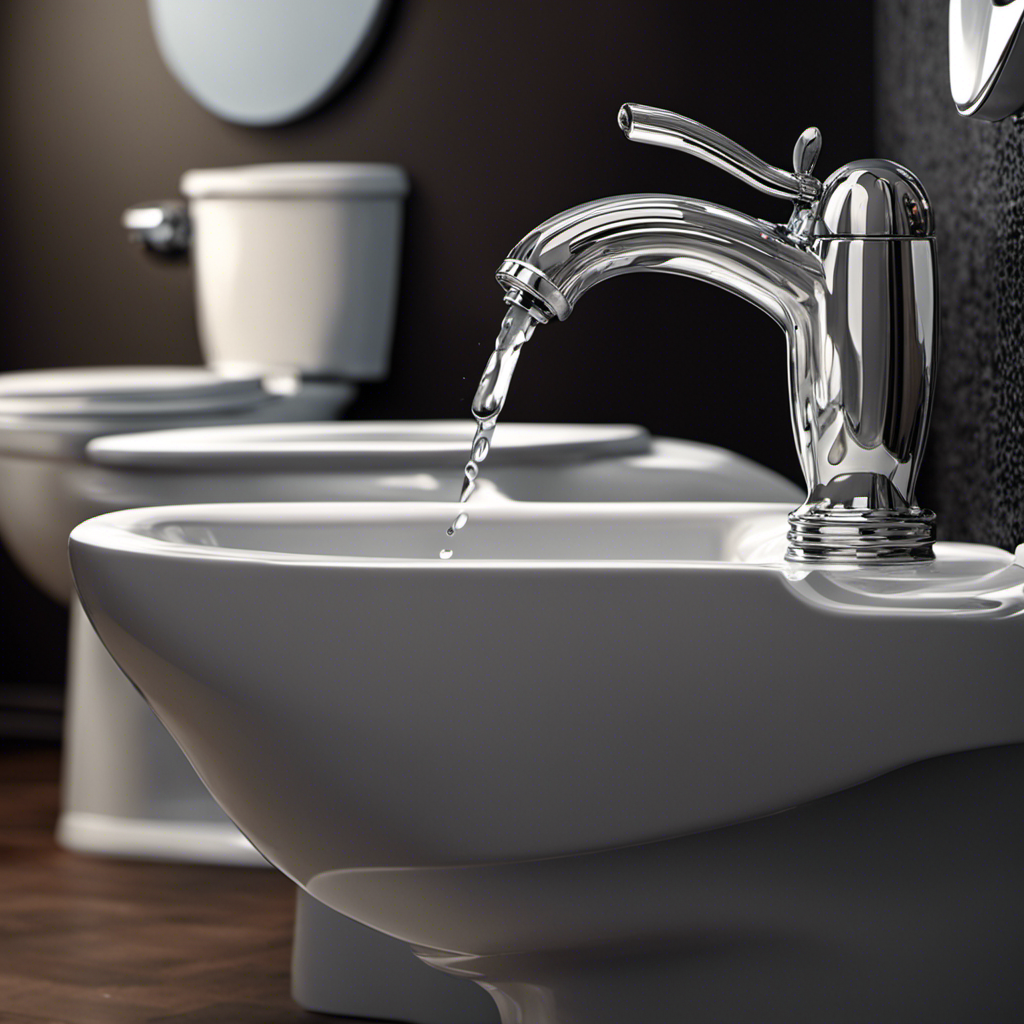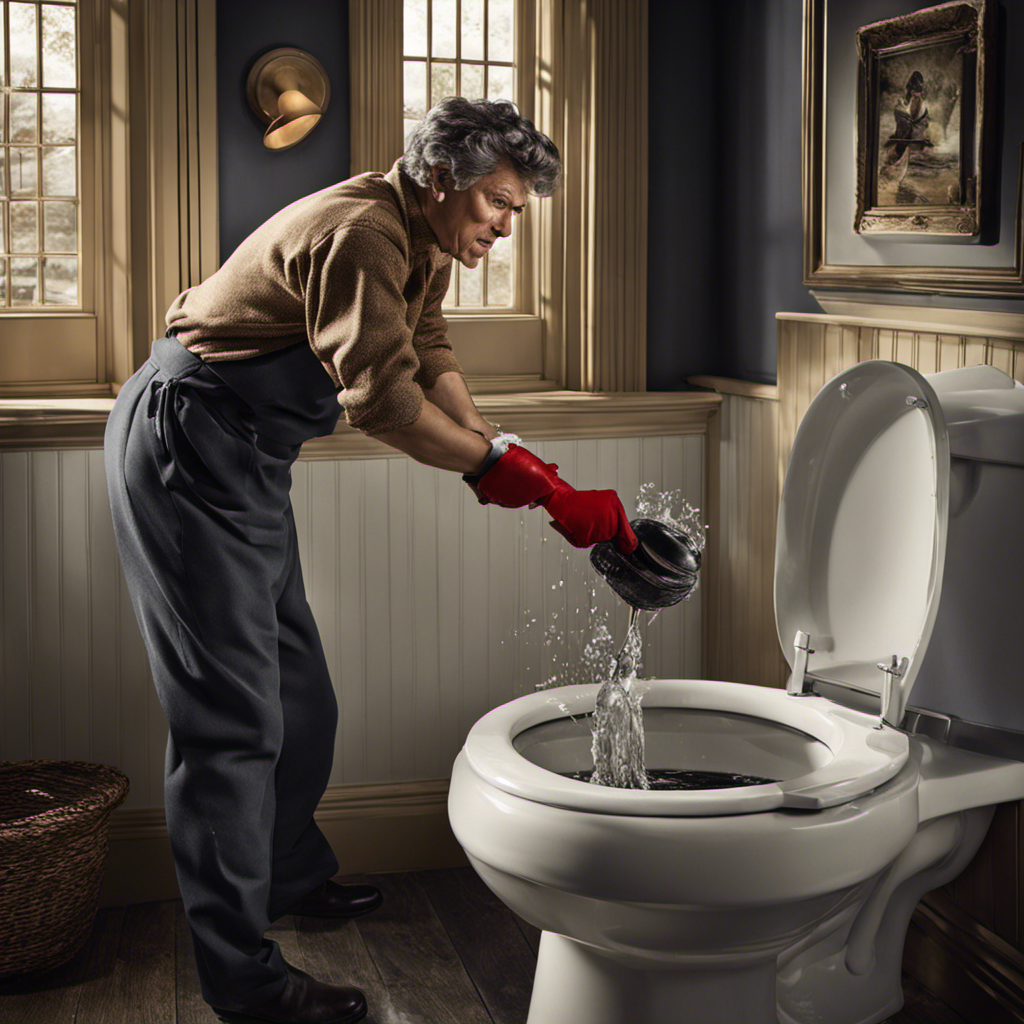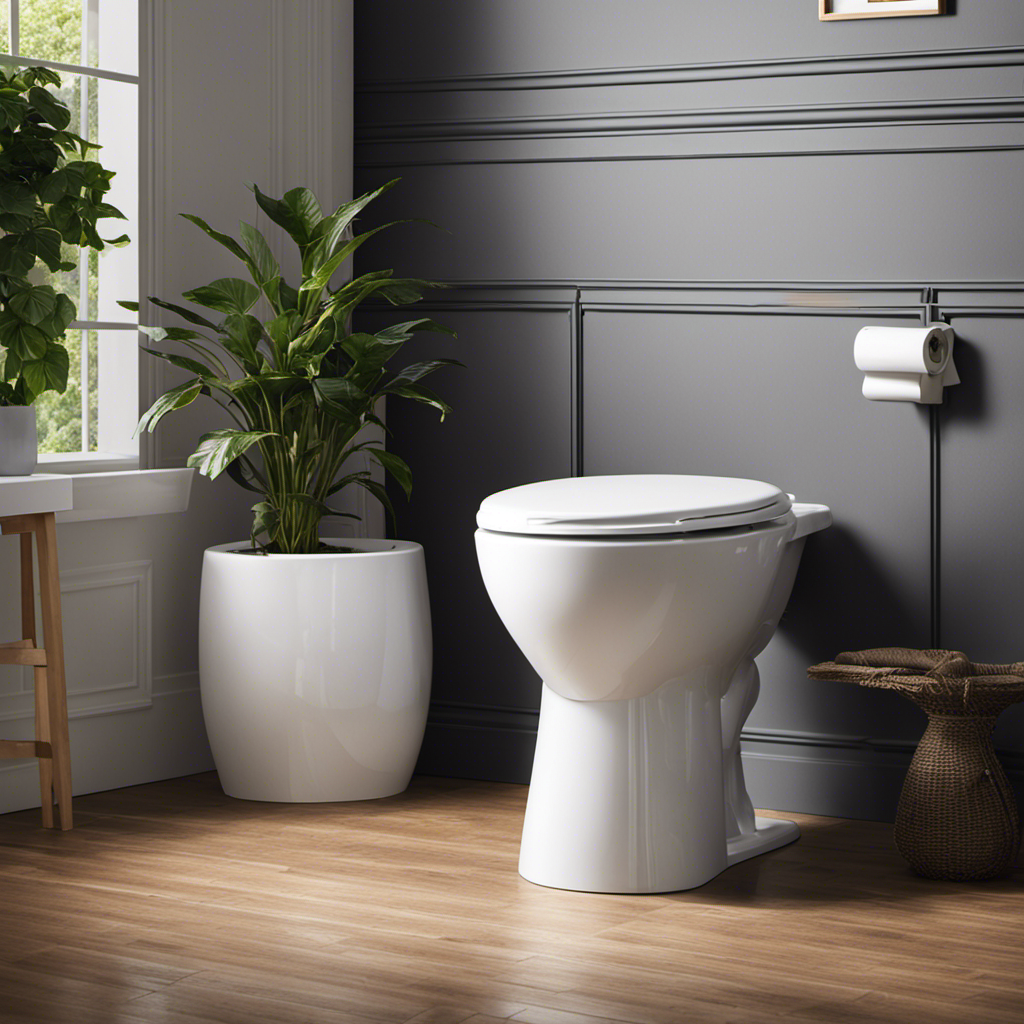Hey there! Ever been in a situation where you need to turn off the water to your toilet but have no idea how? Don’t worry, I’ve got you covered.
In this step-by-step guide, I’ll show you exactly how to locate the shut-off valve, shut off the water supply, and confirm that the water is off.
We’ll even go through the process of draining the toilet tank and turning the water back on.
So let’s dive in and take control of that stubborn water flow!
Key Takeaways
- The shut-off valve for the toilet is typically located near the base of the toilet on the wall behind or next to it. It can be a small knob or lever that is turned clockwise to shut off the water supply.
- If unable to operate the shut-off valve, it is important to shut off the main water supply to the house.
- To confirm that the water is off, check for visible leaks around the shut-off valve and the base of the toilet. Flush the toilet to test the water flow. If water continues to fill the toilet bowl or if you hear running water after flushing, there may be a leak that needs to be addressed.
- When draining the toilet tank, turn the shut-off valve clockwise to shut off the water supply. Flush the toilet to remove most of the water from the tank, and then hold a bucket under the flush valve and flush the toilet again to drain the remaining water.
Locating the Shut-Off Valve
The shut-off valve is usually located near the base of the toilet. It is important to know the location of this valve as it allows you to turn off the water supply to the toilet in case of emergencies or when performing regular maintenance.
Regular maintenance is crucial to ensure the proper functioning of the shut-off valve. Over time, the valve may develop issues such as leaks or becoming stiff, which can affect its performance. Common issues with toilet shut off valves include corrosion, blockage, or worn-out seals.
Regularly inspecting and maintaining the shut-off valve can help prevent these issues. If you notice any problems with the shut-off valve, it is recommended to seek professional assistance to fix or replace it.
Shutting off the Water Supply
Start by locating the valve near the base of the toilet and simply shut it. This is the first step in troubleshooting water supply issues or restarting the water flow to your toilet.
Here’s a step-by-step guide to shutting off the water supply:
-
Find the shut-off valve: Look for a small knob or lever on the wall or floor near the base of the toilet. It’s usually located on the water supply line.
-
Turn the valve clockwise: Use your hand or a wrench to turn the valve clockwise. This will shut off the water supply to the toilet.
-
Test the shut-off: Flush the toilet to make sure that the water flow has stopped. If the tank continues to fill, you may need to shut off the main water supply to the house.
Turning the Shut-Off Valve Clockwise
To stop the water flow, simply give the shut-off valve a clockwise twist. This valve is usually located on the wall behind the toilet or on the supply line leading to the toilet tank. Turning it clockwise will close the valve and stop the water from flowing into the toilet. It’s a simple and effective way to prevent any water damage or flooding in case of a toilet leak or malfunction.
However, there are alternative methods to turn off the water to the toilet if you can’t locate or operate the shut-off valve. One option is to shut off the main water supply to your entire house. This can be done by locating the main shut-off valve, usually located near the water meter, and turning it clockwise to stop the water flow to the entire house.
Regular maintenance of your shut-off valve is important to ensure its proper functioning. Over time, valves can become corroded or stuck, making it difficult to turn them off in case of an emergency. It’s recommended to test and operate the shut-off valve periodically to make sure it is in good working condition. If you encounter any issues or difficulties, it’s best to consult a professional plumber to inspect and repair the valve if necessary.
Here’s a helpful table to summarize the steps for turning off the water to the toilet:
| Step | Action |
|---|---|
| 1 | Locate the shut-off valve. |
| 2 | Turn the valve clockwise to close it. |
| 3 | Check for any water flow to ensure the valve is closed. |
| 4 | If unable to operate the shut-off valve, shut off the main water supply to the house. |
Confirming the Water Is off
Make sure you check for any signs of water flow to confirm that the valve is closed. To ensure that the water is off and there are no leaks, follow these three steps:
-
Look for visible leaks: Examine the area around the shut-off valve and the base of the toilet for any signs of water. If you notice any drips or puddles, it indicates a leak that needs to be addressed before proceeding.
-
Flush the toilet: Press the flush handle to test the water flow. If water continues to fill the toilet bowl, it means the valve is not completely closed. In this case, you may need to turn the valve further or consider replacing it if it’s faulty.
-
Listen for running water: After flushing, listen closely for any sounds of running water. If you hear water running, it suggests that the valve is not fully closed, and there might be a leak somewhere in the system.
Draining the Toilet Tank
By emptying the tank, you can prevent any accidental spills or splashes.
To drain the toilet tank, follow these simple steps.
First, locate the water shut-off valve, which is usually located behind or near the toilet. Turn the valve clockwise to shut off the water supply to the toilet.
Once the water supply is off, flush the toilet to remove most of the water from the tank.
Next, locate the tank’s flush valve, which is usually located at the center of the bottom of the tank. Remove the lid from the tank and find the flush valve.
Hold a bucket or a large container under the flush valve and flush the toilet again. This will drain the remaining water from the tank into the bucket.
Once the tank is completely empty, you can proceed with cleaning the toilet tank or any necessary repairs.
Reversing the Process to Turn the Water Back on
After locating the water shut-off valve, simply turn it counterclockwise to restore the water supply.
To reverse the process of turning off the water to the toilet, follow these steps:
-
Locate the water shut-off valve: Look for a small metal or plastic valve near the base of the toilet. It is usually located on the wall behind or next to the toilet.
-
Turn the valve counterclockwise: Using your hand or a wrench, turn the valve counterclockwise to open it. This will allow water to flow back into the toilet tank.
-
Check for leaks: After turning on the water supply, carefully inspect the area around the valve and the toilet tank for any signs of leaks. If you notice any leaks, tighten the valve or call a professional plumber for assistance.
Frequently Asked Questions
How Do I Know if My Toilet Shut-Off Valve Is Faulty and Needs to Be Replaced?
To determine if my toilet shut-off valve is faulty and needs replacement, I can troubleshoot common issues such as leaks or difficulty turning it off. If these problems persist, it may be time to learn how to replace a faulty shut-off valve.
Can I Turn off the Water Supply to Just the Toilet Without Affecting the Rest of the Plumbing in My House?
To turn off the water supply to just the toilet without affecting the rest of the plumbing in my house, I can use alternative methods like shutting off the toilet’s shut-off valve. Not doing so may result in water damage or leaks.
What Should I Do if the Shut-Off Valve Is Stuck or Difficult to Turn?
If the shut-off valve is stuck or difficult to turn, there are a few alternative solutions you can try. First, you can use a pair of pliers to gently loosen it. If that doesn’t work, it may be best to seek professional help.
Is It Necessary to Drain the Toilet Tank Completely Before Turning off the Water Supply?
No, it’s not necessary to drain the toilet tank completely before turning off the water supply. However, it’s a good idea to flush the toilet once to remove any excess water and reduce the risk of spills.
Can I Use an Alternative Method to Turn off the Water Supply to My Toilet if the Shut-Off Valve Is Inaccessible or Non-Existent?
If the shut-off valve is inaccessible or non-existent, there are alternative methods to turn off the water supply to your toilet. Here are some troubleshooting tips to help you in this situation.
Conclusion
So there you have it, folks! Turning off the water to your toilet is as easy as a twist of the wrist. Just locate the shut-off valve, give it a clockwise turn, and voila! The water flow will come to a halt, allowing you to work on your toilet without any surprises.
Remember to drain the tank before you begin your repairs, and when you’re done, simply reverse the process to turn the water back on. It’s like performing a magic trick, but with plumbing!










